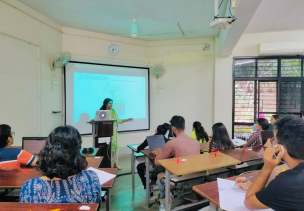Humans being the social creatures that we are, we thrive on interaction. While many of these interactions are pleasant, many are not. ‘Unpleasant’ interactions can be highly variable – from those causing mild discomfort to others involving outright conflicts.
Non-conflict situations
Since most of us are not formally trained to handle ‘unpleasant’ interactions, we either turn to confrontation, or to pre-existing ways of tackling such situations of which we are already a part. Most of these pre-existing ways rely on our relationships, designations, and other social constructs of societies. For example, if we had lent someone a pen, and want them to return it, our approaches to do so would be vastly different if the borrower was a friend, a chance acquaintance, or a superior in an organisation.
But this is a very simple scenario. Now consider a few real-life complex scenarios involving interpersonal situations like working on a high-stakes team project or lobbying with people in positions of power for a new initiative. Still more complex scenarios could be those involving country-level policy design and/or dissonance amongst political leaders or working on strategic relations with multifarious interests (both individual and sectoral/public-facing). While these situations may not include or even hint at outright conflict, they are supremely uncomfortable, high-stress conditions.
In such cases, the sheer numbers of layers – of participants’ views, past experiences, fears, biases, strategies, perspectives, and necessities – that must be considered when crafting a solution can be overwhelming. Such situations can leave those working towards a particular outcome feeling inadequately equipped to move forward towards a suitable goal for all involved.
This is where the Dialogic Method can be used to tackle and enhance the nuances in human interactions. The process of dialogue can help participants navigate through challenging situations, especially those that involve large, visionary goals, where a resolution may not be an immediate outcome, or even an immediate expectation of the stakeholders involved. The Dialogic Method also helps in traversing the in-betweens of scenarios which may not be resolved at the flip of a switch. The outcomes of applying the Dialogic Method to a problem-situation may range from attaining perspective, introduction of new information, capturing consensus, redesigning goals, commitment-setting, partnership formation and many more.
Outright conflicts
In situations where the participants are in a state of conflict with each other, the Dialogic Method works to de-escalate the conflict. This can be achieved by shifting away from a ‘we need to win this battle’ focus towards a ‘what is the root cause of the conflict and how do we solve it?’ mindset.
The power of the Dialogic method in such cases rests with the power of one – where just one person, who is willing to engage in dialogue, can initiate a reflected change in others. This is especially important in situations where rationality may be overwhelmed by emotionally charged inputs. Sometimes, half the battle in such cases can be won by getting people to mirror one person’s rationality – a change that could shift the process towards an acceptance of differing points of view and a willingness to reflect on a gathered pool of information.

